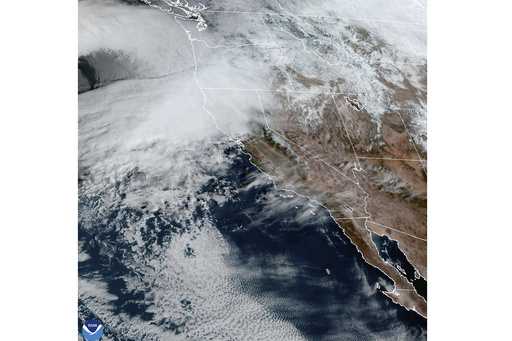
A significant storm is approaching the West Coast, bringing with it a noteworthy weather phenomenon known as a bomb cyclone.
This term, popular among weather enthusiasts, refers to a meteorological process called bombogenesis, which describes the rapid intensification of a cyclone over a short period. This event is expected to take shape as northern California and the Pacific Northwest brace for the storm this week.
So, what exactly is a bomb cyclone, what triggers its formation, and why does it evoke such concern among meteorologists and communities alike?
A bomb cyclone results from the swift intensification of a cyclone situated between tropical and polar regions, as per the National Oceanic and Atmospheric Administration (NOAA). It typically forms when a cold air mass interacts with a warm air mass, a phenomenon that can occur over oceanic waters.
Determining whether a cyclone qualifies as a bomb cyclone involves measuring its atmospheric pressure, typically represented in millibars. According to the National Weather Service, a storm is classified as a bomb cyclone if it experiences a drop of 24 millibars or more within 24 hours. Forecaster Stephen Baron noted that this rapid intensification is often most prominent in hurricanes, although it can also occur with Nor’easters on occasion.
The reason for this storm’s arrival on the West Coast is tied to an atmospheric river—a long stream of moisture flowing over the Pacific Ocean. The National Weather Service Weather Prediction Center has issued warnings for excessive rainfall from Tuesday through Friday as northern California and the Pacific Northwest prepare for this powerful storm, which has intensified to the point of being categorized as a bomb cyclone.
Bomb cyclones are not confined to the West Coast; they can occur in various oceanic regions, including the Northwest Pacific and North Atlantic.
This impending storm is projected to deliver heavy rainfall, leading to potential flash flooding and winter storms in areas with varying elevations along the West Coast.
Additionally, high wind watches are anticipated in certain regions, creating hazardous travel conditions. Expect power outages and possible significant damage to trees and infrastructure as a result of the storm.
Bomb cyclones have been linked to significant weather occurrences nationwide in recent years. For instance, Hurricane Milton, which struck Florida last month as a Category 3 hurricane, was classified as a bomb cyclone. In 2018, a bomb cyclone that gained popularity on social media brought snowfall to the Southeast alongside winds nearing hurricane strength. Another instance in 2022 resulted in extreme weather and frigid temperatures affecting much of the country.
